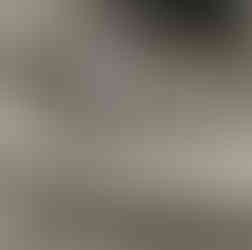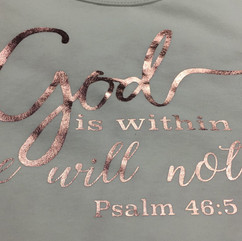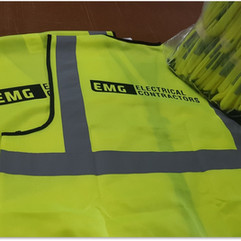What is the difference between Heat Transfer Vinyl (HTV) and DTF Printing?
- Lisa Quevedo

- Feb 16, 2023
- 4 min read
Updated: Jun 24, 2024
There’s a lot of talk about DTF printing and how it’s the most advanced and superior technology on the market. It is said that it puts heat transfer vinyl printing to shame, but is this the truth, or is it a sales gimmick?

In this article, we will discuss the differences between heat transfer vinyl (HTV) and direct to film (DTF) printing. We will cover the advantages of both HTV and DTF Printing and give you a clear picture (excuse the pun) of both, which will help you decide which is better for your business or side hustle.
What is direct-to-film printing, or DTF printing?
In a previous article, we explained what DTF is and the difference between sublimation, DTF, and DTG apparel branding.
However, here’s a brief DTF printing definition:
DTF printing, also known as direct-to-film apparel branding, involves printing DTF waterbased pigmented ink to PET film (polyethylene terephthalate film) in a mirror image and then adding a second layer of powder coating (known as the "powder curing process") to the print to allow the film to be placed on the fabric or merch you want to brand. Then it can be transferred directly from the PET film onto the apparel using a heat press. (No weaving is required, and it's environmentally conscious.) You can either ask a company to print for you and use your own heat press to transfer the image, or it can be done for you by the DTF print shop.
What is heat transfer vinyl, or HTV printing?
Before we can discuss HTV, we must first define print vinyl. Print vinyl, also known as vinyl, used in the marketing sector to promote businesses or events, is available in a variety of forms, including banner printing, apparel branding, and sticker printing. You get the picture.
What is HTV?
Basically, it is a polyurethane film, a type of coated plastic film with an adhesive backing. You can get vinyl with a sticky adhesive back (like a sticker) or vinyl that has an adhesive back, but the "glue" is only activated during the heat transfer process. Once the vinyl has been printed and then cut with a plotter (some printers, such as the Roland SG300 that we use, will print, and cut, you will weave the print (peel the vinyl parts that must not be transferred to the clothing). Then heat transfer takes place when the apparel is placed on a heat press and then transferred onto the fabric.
Advantages Comparison Table Image – DTF vs HTV:
(if you cannot see the image, I’ve written out the advantages below the comparison table image)

Advantages Comparison Table Text Only – DTF vs HTV:
Advantage DTF
Full-colour printing
Detailed graphics
Print Colours
White
RGB and CMYK full colour
No weaving
High quality
Long-lasting—does not flake off
It is pliable and does not crack
Print on
Cotton
Nylon
Silk
Polycotton
Polyester
Denim
Print on any fabric colour you want.
Environmentally friendly
Print speed: up to 4.8m2/hr
Quick bulk supply and turnaround time
Great for bulk orders
More affordable than screenprinting
Very affordable when doing large quantities of printing
Advantage HTV
Variety of Vinyl Colours
Gold
Silver
Reflective
Frosted
Glitter
CMYK
Metalics
Glow in the dark
Flock (makes you think of velvet)
Can print detailed artwork if you are using a printer with cutter however fine artwork might lift from material.
No messy inks or chemicals
Affordable when printing low quantities
Great for small orders
Cutting speed: 10 to 300 mm/s (With Roland SG300)
Output speed: up to up to 6.9m2/hr (75 sqr ft ph) (With Roland SG300)
710mm wide print (With Roland SG300)
More affordable than screenprinting
Prints on fabric and other materials such as plastic, porcelain, or glass
Shirts, hoodies, sweaters, pants, and bags can all be printed.
Individual names or numbers with no high set-up fees (great for sport teams or 1 day event like "The Muddy Princess")
So which is better, HTV or DTF printing?
It really will depend on your needs. If you are a small business that does not keep a lot of stock on hand, then HTV is a perfect and affordable fit. If you are a business that only needs t-shirt printing for a certain event with no major fine details in your print, then heat transfer vinyl is great.
For a company, school, or small business that requires detailed, long lasting, quality print branded clothing, uniforms, or apparel, DTF printing is ideal. It is more detailed, faster, and lasts longer. There’s no weaving, which immediately decreases the time spent on the garment, even if the technology is more advanced. And it can print on almost any material.
Both have their advantages. Before you google "dtf printing near me" or "print shop near me" in the Western Cape, rather contact Campus Solutions to help you figure out what the best fit is for your business. We will listen, we will be honest, and we will produce quality work should you choose us to be your printing company of choice.
Campus Solutions | Print Shop in the Helderberg, Western Cape
The experts in printing who listen to you.


































Comments